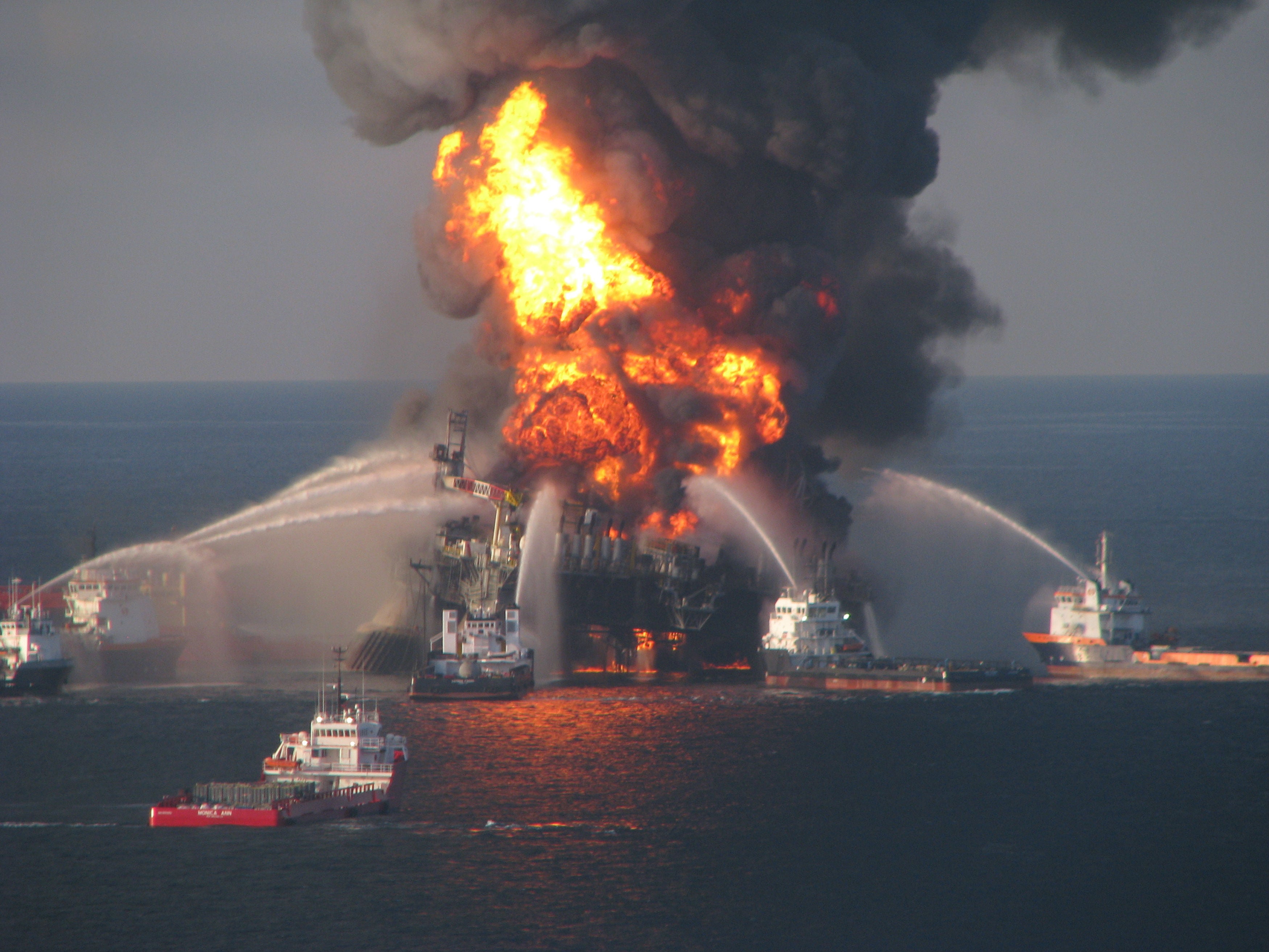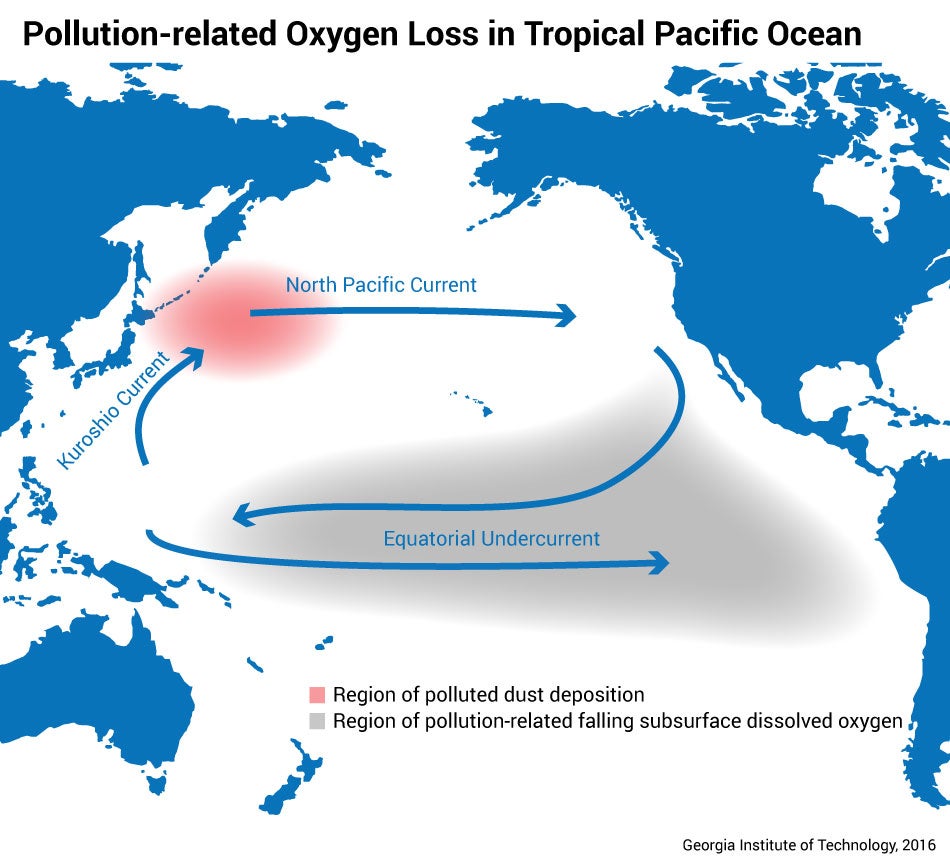Air pollution creates chemical disaster as big as largest-ever oil spill every single week
Toxic chemicals found in oil spills are getting into the oceans and marine wildlife as a result of the burning of fossil fuel and wildfires

Air pollution from fossil fuels and wildfires is dumping the same amount of the poisonous chemicals produced by the worst accidental oil spill in history into the sea every week, according to new research.
A separate study found that a different kind of air pollution can cause blooms of plankton thousands of miles away, leading to the creation of “dead zones” with such low levels of oxygen that they are lethal to fish and other marine life.
The studies reinforce how much of an effect industrial emissions and large wildfires – an increasing problem because of climate change – are capable of having on Earth’s oceans.
A team of scientists from Spain sailed around the world in the research ship Hespérides, from Spain to Brazil then South Africa, Australia and Honolulu before heading back to Spain through the Panama Canal.
On the way, they collected numerous samples of air, rain and sea water.
They found traces of “polycyclic aromatic hydrocarbons”, or PAHs, some of which are highly toxic, in the samples and then used the figures to estimate the total amount going into Earth’s three main oceans – the Atlantic, Pacific and Indian.
Writing in a paper in the journal Nature Geoscience, the researchers revealed: “The global atmospheric input of polycyclic aromatic hydrocarbons to the global ocean is estimated at 90,000 tonnes per month, four times greater than the input from the Deepwater Horizon spill.”
After an explosion on the Deepwater Horizon oil platform in the Gulf of Mexico in 2010, a massive slick developed as engineers struggled to cap the leaking well underwater. It is estimated that nearly five million barrels of oil went into the sea. The only bigger slick was caused deliberately by Saddam Hussein during the first Gulf War.
Researcher Jordi Dachs, of the Institute of Environmental and Water Studies in Barcelona, wrote in an email: “We have not yet evaluated the impact of these inputs of PAHs on the oceanic fauna, but this study shows that this chemicals are ubiquitous in the oceans, and the potential effects are real.
“People may be worried to see that the composition of the atmosphere and seawater, even in the remotest regions, is a mirror of our activities on land (industry, cars, cities …).”
Professor Tim Jickells, director of the Centre for Ocean and Atmospheric Sciences at East Anglia University, who was not involved in the research, told The Independent that while many of the compounds in oil slicks “degrade very quickly” in the sea, PAHs remain for much longer.
“They are the slowly degrading, persistent and potentially harmful compounds that lurk within oil,” he said.
“We don’t really understand what this low level, insidious stuff does. We don’t really know at what point these things will cross over into doing major damage.
“We have found these things in polar bears and seals. You’ll have some in your body, I will have some in mine.”
He said while they could be “seriously poisonous”, animals’ bodies have natural defence mechanisms that usually “can handle it” at low concentrations.
However Professor Jickells added: “They do accumulate in organisms that have a lot of fat and there are concerns around seals, whales, polar bears and these kinds of organisms.
“If that animal starts to get hungry, what it does is metabolise its fat reserves. So in addition to being hungry, it will be exposed to this at the same time.”
In the second paper, also published in Nature Geoscience, researchers in the US found that air pollution from Asia is affecting oxygen levels across much of the tropical Pacific Ocean.

High levels of iron and nitrogen can be carried by the wind and ocean currents for thousands of miles, where they provide food for phytoplankton. As the bloom of plankton grows, some of them start to sink down where they are consumed by bacteria.
“Like us breathing in oxygen and exhaling carbon dioxide, the bacteria consume oxygen in the subsurface ocean, and there is a tendency to deplete more oxygen,” the researchers said.
These low-oxygen areas tend to be in the deep ocean, but they can swell into coastal waters, killing fish, crabs and other sea life there.
Researcher Taka Ito, an associate professor at Georgia Tech, warned that such “hypoxic events” could become more common as the low-oxygen areas increase.
Reacting to the research, Professor Daniela Schmidt, a palaeobiologist at Bristol University, said: “This paper clearly highlights the complex interactions between the multiple stressors acting on marine ecosystems.
“Warming, acidification and loss of oxygen have effects which are very difficult to predict as there are a very large number of possible combination of impacts.”
Join our commenting forum
Join thought-provoking conversations, follow other Independent readers and see their replies
Comments
Bookmark popover
Removed from bookmarks